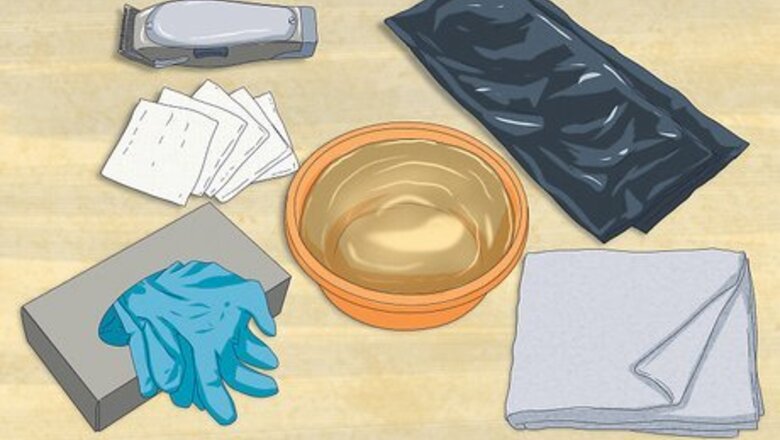
views
Gather your materials.
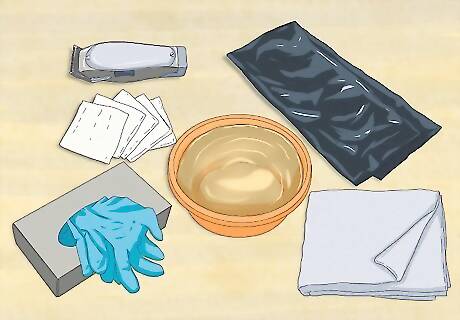
Get a some disposable nitrile gloves, gauze pads, a bowl of water, some towels, and a trash bag. If your cat is hairy, get some clippers. Also, get someone to help hold the cat still while you work. Consult a veterinarian if you haven’t already. If your cat has an abscess or infection, doing this at home may make the problem worse. You should only express a cat’s anal glands if your vet has deemed it necessary. Cats normally empty their anal glands on their own, so you shouldn’t need to do this unless there’s some medical condition impacting fluid buildup in the anal sacs. Note: Cats with anal gland issues may drag (or "scoot") their bum across their floor. They might also give extra attention to their butt or tail (often through biting or licking); because of this, they may start losing fur around their tummy and the bottom of their tail. Kitties with anal gland issues might also be hesitant to poop.
Hold your cat still.
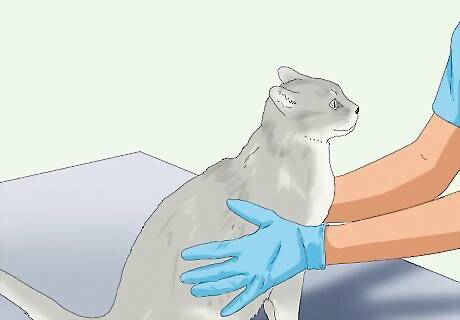
Have a partner or assistant hold the cat still, facing away from you. Your cat may not want to hold still, so offer treats liberally. The sweetest cat of all time can turn surly and aggressive pretty quickly if someone is messing around with their rear and the sacs are hurting them. Have the cat holder throw on some thick oven mitts and a coat to prevent if your cat starts expressing their frustration with their claws. Do this in the tub if you want to make cleanup easy.
Trim excess hair back, if necessary.
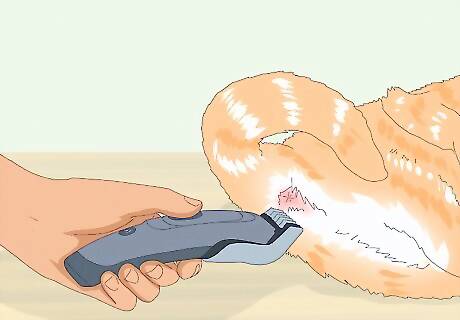
If your cat is hairy, you may need to trim the hair around the anus before you can proceed. Simply grab a clipper or some scissors and carefully cut away any excess fur, mattes, or tangles. You probably shouldn’t need to do this; the area around a cat’s anus is rarely going to be overwhelmed by fur.
Locate the glands.
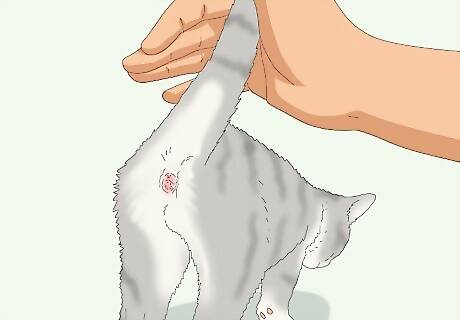
Pull the cat’s tail gently upward to observe the anus. Look for the glands, which should be located just beneath and to the sides of the anus. They’re under skin and fur, but you should be able to feel the bulge of each gland.
Wipe away any dried debris.

If the anus and glands are crusted with dried secretions, rinse with water and then gently wipe away the softened crusts. In some cases, you may not be able to wipe away the softened crusts very easily. If this happens, try putting a warm compress in the anus for five or ten minutes to soften clogged openings.
Pinch the glands to express them.
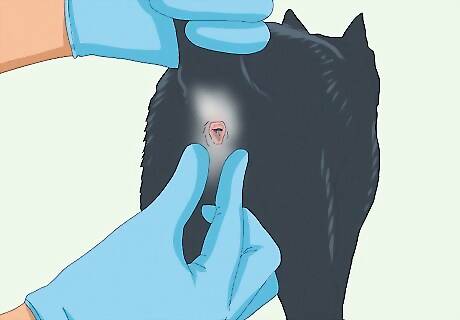
Pinch the anal glands gently. Using your gloved hands, pinch the two anal glands under the anus, using your forefinger and thumb. Gently push upwards and towards the sphincter, increasing your pressure until the glands express themselves and release excess secretions. Some very unpleasant fluid is going to come out. Keep tons of towels or paper towels on hand. You will likely notice a distinct odor once the glands release their secretions. This is a sign you succeeded in your task. If there is blood or pus in the discharge, your cat’s anal glands are probably infected. Contact a veterinarian as soon as possible.
Clean your cat’s rear.
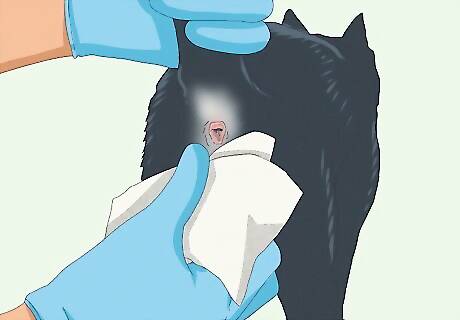
Use a damp towel or gauze to wipe the anus and the surrounding area clean. Thoroughly clean any fur that might have gotten anal sac fluid on it.
See a vet if the problem occurs again.

This should not be a regular occurrence. If you express your cat’s anal glands and your furry friend starts exhibiting problems again, it’s time to see a vet. Potential signs that your cat is having more issues with their anal glands include: Troubles using the bathroom and excessive soft stools. Aggressive behavior when you try to touch your cat’s rear end. Paying excessive attention to their rectum or licking their tail. Butt-scooting against the floor. Sticky or bloody discharge.


















Comments
0 comment